How the SharePoint Online Recycle Bin Works
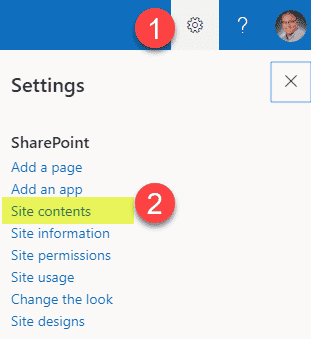
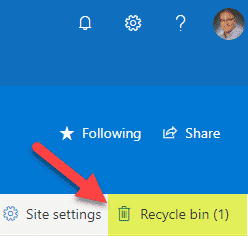
Are you ready to talk about the recycle bin? In this post, I’m going to talk about the recycle bin in SharePoint Online. I blogged about it a while ago, but a lot has changed since then. So, I’d like to share with you, my loyal readers, the new updates, as well as the tips and tricks you need to know when using the recycle bin in modern sites.
What is a recycle bin?
The Recycle Bin is a specific location that stores all deleted items. It allows the user to access and restore the contents if necessary.
How do I access the recycle bin?
The experience varies depending on the type of site template you are using.
For team sites (with or without Office 365 Groups)
The Recycle Bin link is prominently located in the Quick Launch (left menu). It cannot be removed, even if you edit the menu.
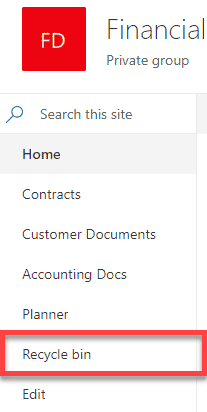
For communication sites
The recycle bin is not part of the standard quick launch menu at the top of the site. This is because communication sites are primarily used for one-way information sharing and global communications.
To access the recycle bin on the communication site:
- Click the gear icon > Site Content.
- Click the trash can in the upper right corner.
What ends up in the SharePoint recycle bin?
- Deleted documents
- Deleted files
- Deleted Events (from SharePoint Calendar)
- Deleted website pages (including news articles)
- Deleted Document Libraries
- Deleted Lists
- Any file or folder deleted from synced OneDrive.
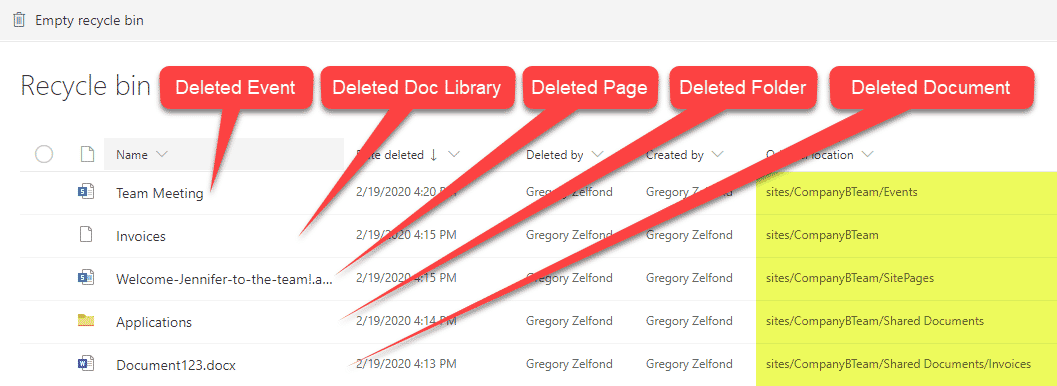
Who can access the contents of the SharePoint Online Recycle Bin?
Any site member (with Edit permission level) or the site/group owner (with Full Control permission level) can access the recycle bin. Site visitors (with Read permission level) cannot access the contents of the recycle bin.
Who can restore SharePoint Online Recycle Bin contents?
Any site member (with the “Edit” permission level) or site/group owner (with the “Full Control” permission level) can restore any content from the Recycle Bin. This includes content deleted by the user as well as that of other site members.
The above paragraph is a significant change from the old way the Recycle Bin worked. Previously, site members could only see their own Recycle Bin. Now, users will see the contents of their Recycle Bin + the contents of other site members’ Recycle Bins (as long as the user had access to that content on a site before deletion). And they can also restore other users’ content!
Deleted lists and libraries are exceptions – only site owners or users who deleted the list or library can restore it.
How to restore the contents of the recycle bin?
To restore the contents of the Recycle Bin, click the check boxes next to the contents you want to restore, and then click Restore.
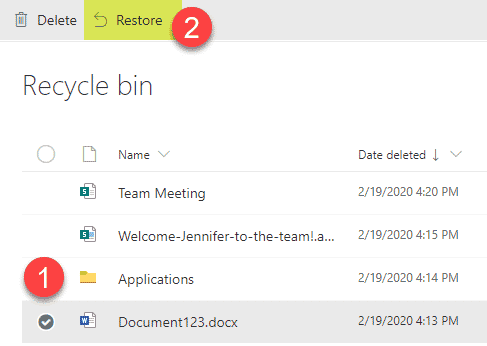
The content returns to its original location. Nothing is lost; all metadata or version history associated with the files is preserved!
SharePoint Recycle Bin or Secondary Recycle Bin?
When users decide to empty their Recycle Bin or delete individual items from the Recycle Bin, those items end up in the secondary Recycle Bin.

A user deletes items from the Recycle Bin
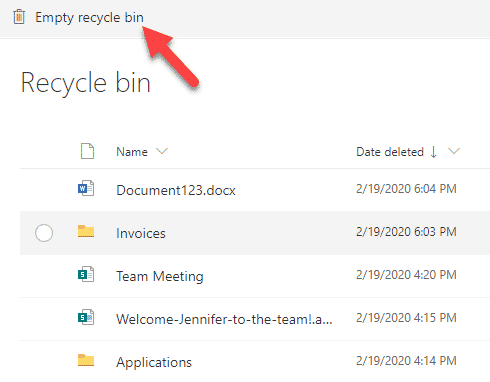
A user empties his trash
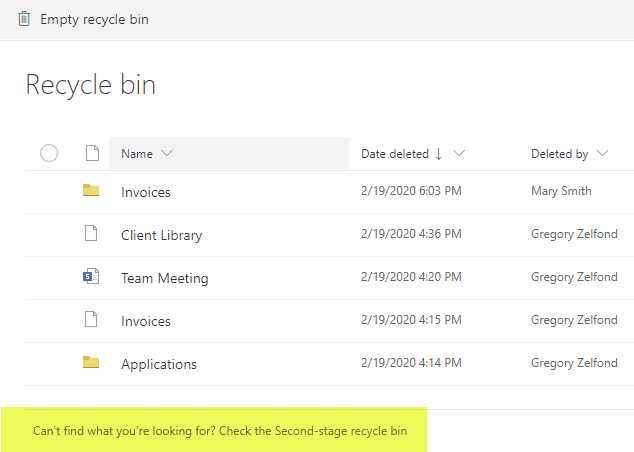
The items end up in the second stage trash.
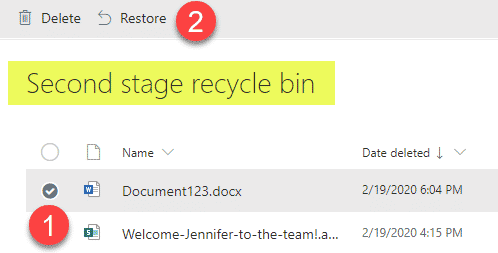
Only site collection administrators have access to the second-stage recycle bin. Just like the “normal” recycle bin, items can also be restored from the second-stage recycle bin.
How to be notified of deleted items?
You may be wondering if there are ways to be notified when items are deleted, so you have enough time to restore the content. I’m glad you asked. Yes, there are.
Alert
Any user can create an alert for deletions and be notified as often as they want.
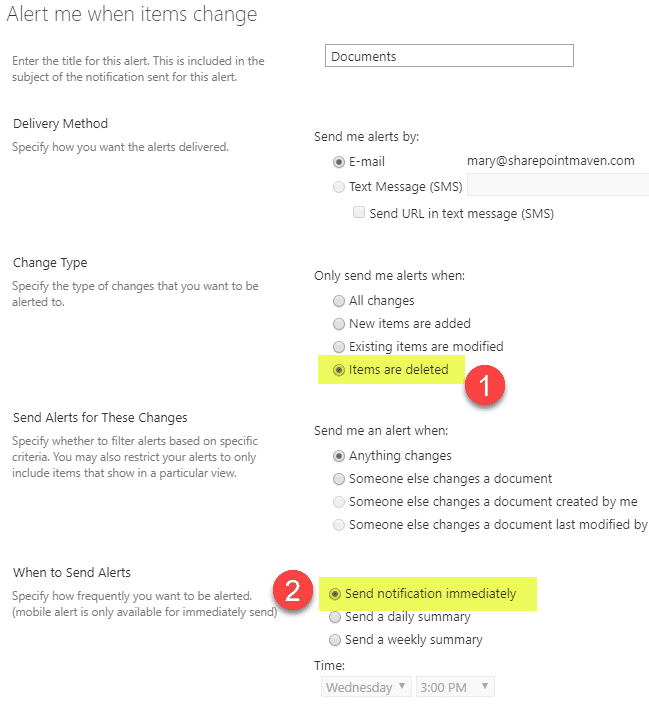
Automatic email notification of mass deletions
Microsoft recently rolled out a new feature that will automatically send you an email if you delete an unusually large number of files at once. Please see this article by Sara Haase for more information.
Searching the Audit Log in the Office 365 Security & Compliance Center
Administrators with access to the Office 365 Security & Compliance Center can also create global alerts for deletions and specific users. I mentioned this in this post.
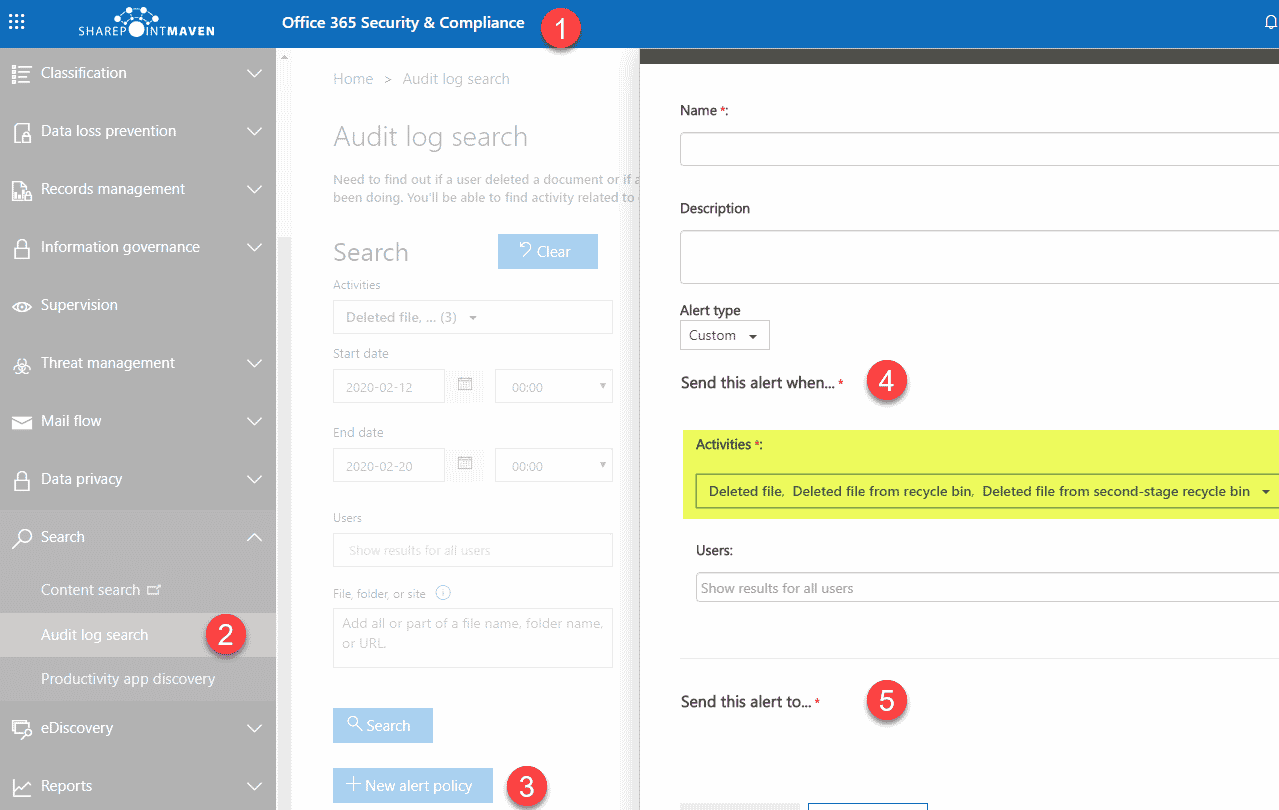
SharePoint Online Recycle Bin Notes
- Items in the Recycle Bin are kept for 93 days (after the deletion date). After that, they are permanently deleted and cannot be restored.
- The total 93-day threshold period applies to both the “regular” Recycle Bin and the Second-Stage Recycle Bin. This means that if the user decides to empty the Recycle Bin five days after deleting items, they will remain in the Second-Stage Recycle Bin for an additional 88 days.
- Each site has its own recycle bin. There is no general recycle bin.
- Search does not index items located in the SharePoint Online Recycle Bin.

